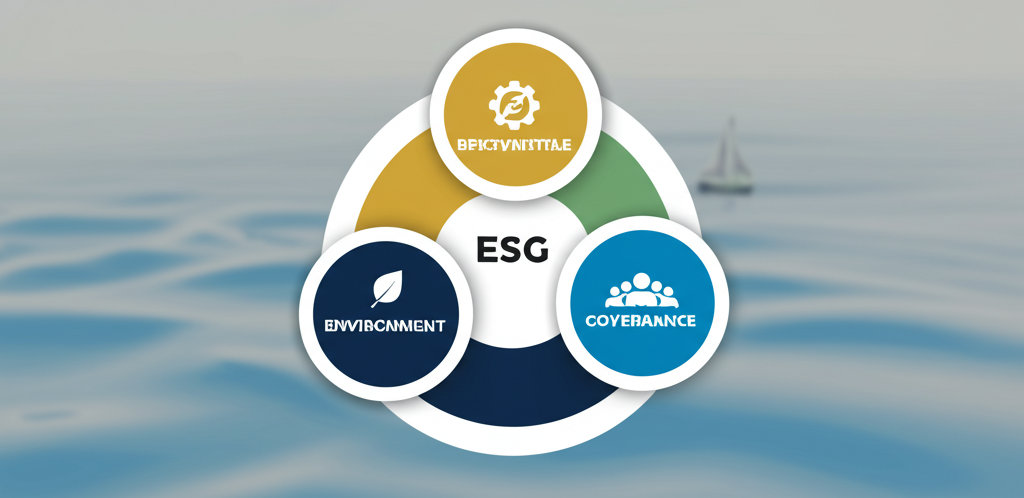ESG Reporting Guide
How to effectively communicate your ESG initiatives to investors and stakeholders

Introduction
Environmental, Social, and Governance (ESG) considerations have moved from the periphery to the center of corporate strategy and investor decision-making. For public companies, effective ESG reporting is no longer optional—it's an essential component of investor communications and corporate transparency.
The rise of ESG-focused investing, increasing regulatory requirements, and growing stakeholder expectations have created both challenges and opportunities for public companies. Those that communicate their ESG initiatives effectively can attract investment, enhance their reputation, mitigate risks, and create long-term value.
This comprehensive guide provides public companies with a strategic framework for developing, implementing, and communicating an effective ESG reporting program. Whether you're just beginning your ESG journey or looking to enhance your existing reporting, these principles and practices will help you communicate your ESG story in a way that resonates with investors and other key stakeholders.
ESG Reporting Fundamentals
Before diving into the specifics of ESG reporting, it's important to understand the fundamental concepts and context that shape this rapidly evolving field.
Understanding ESG
ESG encompasses a broad range of factors that impact a company's performance, risk profile, and long-term sustainability:
- Environmental: Climate change impact, carbon emissions, energy efficiency, waste management, water usage, biodiversity, and resource conservation
- Social: Human capital management, diversity and inclusion, labor practices, human rights, community relations, product safety, and data privacy
- Governance: Board composition and diversity, executive compensation, business ethics, anti-corruption measures, risk management, and shareholder rights
The ESG Reporting Landscape
The ESG reporting landscape is complex and continues to evolve:
- Multiple Frameworks: Several organizations have developed ESG reporting frameworks, including the Global Reporting Initiative (GRI), Sustainability Accounting Standards Board (SASB), Task Force on Climate-related Financial Disclosures (TCFD), and others
- Regulatory Requirements: Governments and regulatory bodies around the world are increasingly mandating ESG disclosures, with requirements varying by jurisdiction
- Investor Expectations: Institutional investors, including major asset managers, are demanding more comprehensive and comparable ESG information
- Ratings and Rankings: Various organizations provide ESG ratings and rankings that influence investor perceptions and decisions
- Consolidation Efforts: Initiatives are underway to harmonize ESG reporting standards, including the creation of the International Sustainability Standards Board (ISSB)
The Business Case for ESG Reporting
Effective ESG reporting offers numerous benefits for public companies:
- Access to Capital: Attracting investment from the growing pool of ESG-focused investors and funds
- Risk Management: Identifying and addressing ESG-related risks before they impact financial performance
- Competitive Advantage: Differentiating your company from peers with less developed ESG programs
- Stakeholder Trust: Building credibility with investors, customers, employees, and communities
- Operational Efficiency: Identifying opportunities for cost savings and process improvements
- Talent Attraction and Retention: Meeting the expectations of employees who increasingly value corporate purpose and responsibility
Developing Your ESG Reporting Strategy
A strategic approach to ESG reporting begins with understanding your company's unique ESG profile and aligning reporting with your business objectives.
Materiality Assessment
A materiality assessment helps identify the ESG issues that are most relevant to your business and stakeholders:
- Identify potential ESG topics relevant to your industry and business model
- Engage with key stakeholders to understand their priorities and concerns
- Assess the potential impact of each ESG topic on your business strategy, operations, and financial performance
- Evaluate the importance of each topic to your stakeholders
- Create a materiality matrix that maps topics based on business impact and stakeholder importance
- Focus your reporting on the most material topics while acknowledging others
Selecting Reporting Frameworks
Choose the reporting frameworks that best align with your company's needs and stakeholder expectations:
- GRI: Comprehensive framework focused on a wide range of sustainability topics and stakeholder interests
- SASB: Industry-specific standards focused on financially material ESG factors
- TCFD: Framework specifically focused on climate-related financial disclosures
- CDP: Detailed environmental reporting with a focus on climate change, water security, and deforestation
- UN Sustainable Development Goals (SDGs): Global framework that can help connect your ESG efforts to broader societal objectives
- Consider a multi-framework approach that addresses the needs of different stakeholders
Setting ESG Goals and Targets
Establish clear, measurable ESG goals that demonstrate your commitment and progress:
- Develop both short-term and long-term goals aligned with your material ESG topics
- Ensure goals are specific, measurable, achievable, relevant, and time-bound (SMART)
- Consider science-based targets for environmental goals, particularly those related to climate change
- Align goals with industry benchmarks and leading practices
- Connect ESG goals to your overall business strategy and financial objectives
- Establish key performance indicators (KPIs) to track and report progress
Data Collection and Management
Implement robust systems for collecting, validating, and managing ESG data:
- Identify data sources and owners across your organization
- Establish clear data collection protocols and timelines
- Implement data management systems that ensure accuracy, completeness, and auditability
- Consider third-party verification or assurance for critical ESG metrics
- Develop processes for addressing data gaps and limitations
- Ensure data security and privacy, particularly for sensitive information
Governance and Oversight
Establish clear governance structures for ESG reporting and performance:
- Define board-level oversight responsibilities for ESG matters
- Establish management-level committees or working groups focused on ESG
- Integrate ESG considerations into risk management processes
- Align executive compensation with ESG performance where appropriate
- Develop clear policies and procedures for ESG reporting and disclosure
- Ensure coordination between departments involved in ESG initiatives and reporting
Communicating Your ESG Story
Effective ESG communication goes beyond compliance to tell a compelling story about your company's approach to sustainability and responsible business practices.
ESG Report Development
Create a comprehensive ESG report that effectively communicates your strategy, performance, and impact:
- Determine the appropriate reporting format (standalone report, integrated report, or section within annual report)
- Develop a clear structure that guides readers through your ESG story
- Include an executive message that demonstrates leadership commitment
- Clearly articulate your ESG strategy, governance, and management approach
- Present performance data with context, trends, and benchmarks
- Use case studies and examples to bring your ESG initiatives to life
- Be transparent about challenges, limitations, and areas for improvement
- Include a framework index or content map to help readers navigate disclosures
Investor-Focused ESG Communications
Tailor your ESG communications to meet the specific needs of investors:
- Highlight the connection between ESG performance and financial outcomes
- Focus on financially material ESG factors relevant to your industry
- Provide decision-useful data in formats that facilitate analysis and comparison
- Address common ESG questions in investor presentations and roadshows
- Prepare your IR team to discuss ESG topics with investors and analysts
- Develop an ESG section on your investor relations website
- Consider participating in key ESG ratings and rankings that influence investor decisions
Broader Stakeholder Communications
Adapt your ESG messaging for different stakeholder groups:
- Develop tailored communications for employees, customers, suppliers, communities, and other key stakeholders
- Create accessible, engaging content formats such as infographics, videos, and social media posts
- Highlight ESG initiatives that are particularly relevant to specific stakeholder groups
- Incorporate ESG messaging into your corporate website, marketing materials, and other communications channels
- Engage with stakeholders to gather feedback on your ESG communications
- Consider targeted communications for specific ESG topics or initiatives
Digital ESG Communications
Leverage digital platforms to enhance the accessibility and impact of your ESG communications:
- Create an interactive online ESG report that allows users to explore topics of interest
- Develop data visualization tools that make complex ESG information more accessible
- Use video content to bring your ESG initiatives to life
- Leverage social media to highlight key ESG achievements and milestones
- Consider developing an ESG microsite or dedicated section on your corporate website
- Ensure all digital ESG content is accessible to users with disabilities
Addressing Challenges and Criticisms
Prepare for and respond to challenges related to your ESG performance and reporting:
- Anticipate potential criticisms or concerns about your ESG initiatives
- Develop clear, factual responses to common ESG questions and criticisms
- Be transparent about areas where you're still working to improve
- Address allegations of "greenwashing" by ensuring claims are substantiated and realistic
- Prepare your communications team to respond to ESG-related media inquiries
- Monitor social media and other channels for ESG-related discussions about your company
Downloadable Resources
To help you implement these best practices, we've created several downloadable resources:
ESG Materiality Assessment Template
A comprehensive template for conducting an ESG materiality assessment.
ESG Reporting Framework Comparison
A detailed comparison of major ESG reporting frameworks.
ESG Data Collection Toolkit
Tools and templates for collecting and managing ESG data.
ESG Communications Checklist
A comprehensive checklist for effective ESG communications.
Conclusion
Effective ESG reporting is a journey, not a destination. As stakeholder expectations evolve, regulatory requirements increase, and best practices emerge, your approach to ESG reporting should continue to develop and mature.
By following the principles and practices outlined in this guide, you can develop an ESG reporting program that not only meets compliance requirements but also creates value for your business and stakeholders. Remember that authenticity, transparency, and strategic alignment are the foundations of effective ESG communications.
As you continue your ESG reporting journey, focus on continuous improvement, stakeholder engagement, and the integration of ESG considerations into your core business strategy. By doing so, you'll be well-positioned to navigate the evolving ESG landscape and leverage your sustainability efforts to create long-term value.
Resource Overview
Key Takeaways
- Focus on material ESG topics that impact your business and stakeholders
- Select reporting frameworks that align with your company's needs
- Establish clear, measurable ESG goals and targets
- Implement robust systems for collecting and managing ESG data
- Tailor ESG communications for different stakeholder groups
Explore More IR & PR Resources
Discover our comprehensive guides to help your public company excel in investor and public relations.

Earnings Call Best Practices
How to prepare and deliver effective earnings calls that impress analysts and investors.
Read more
Crisis Communications Playbook
Essential strategies for public companies to navigate communications during a crisis.
Read more
Media Training for Executives
Preparing your leadership team for effective media interviews and public appearances.
Read more